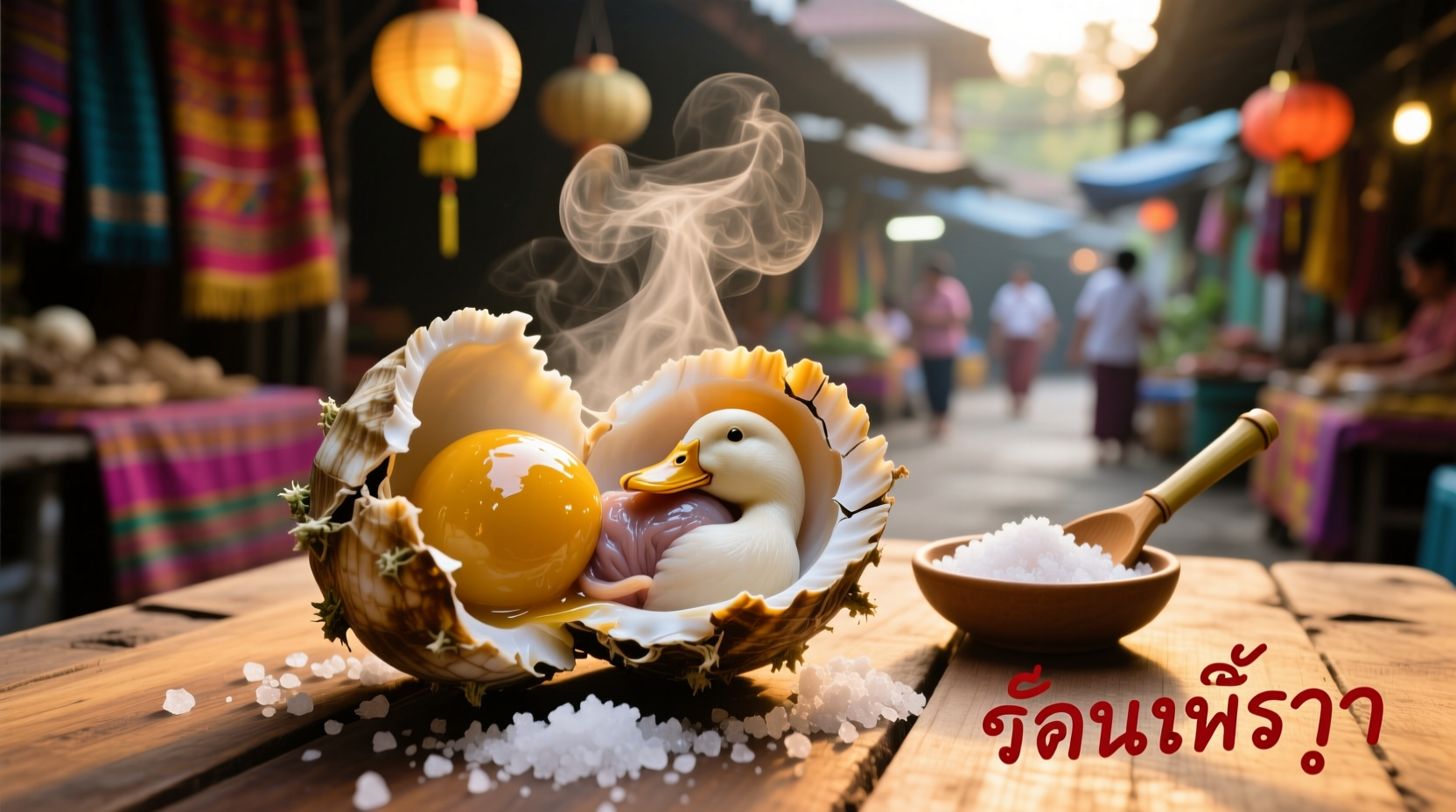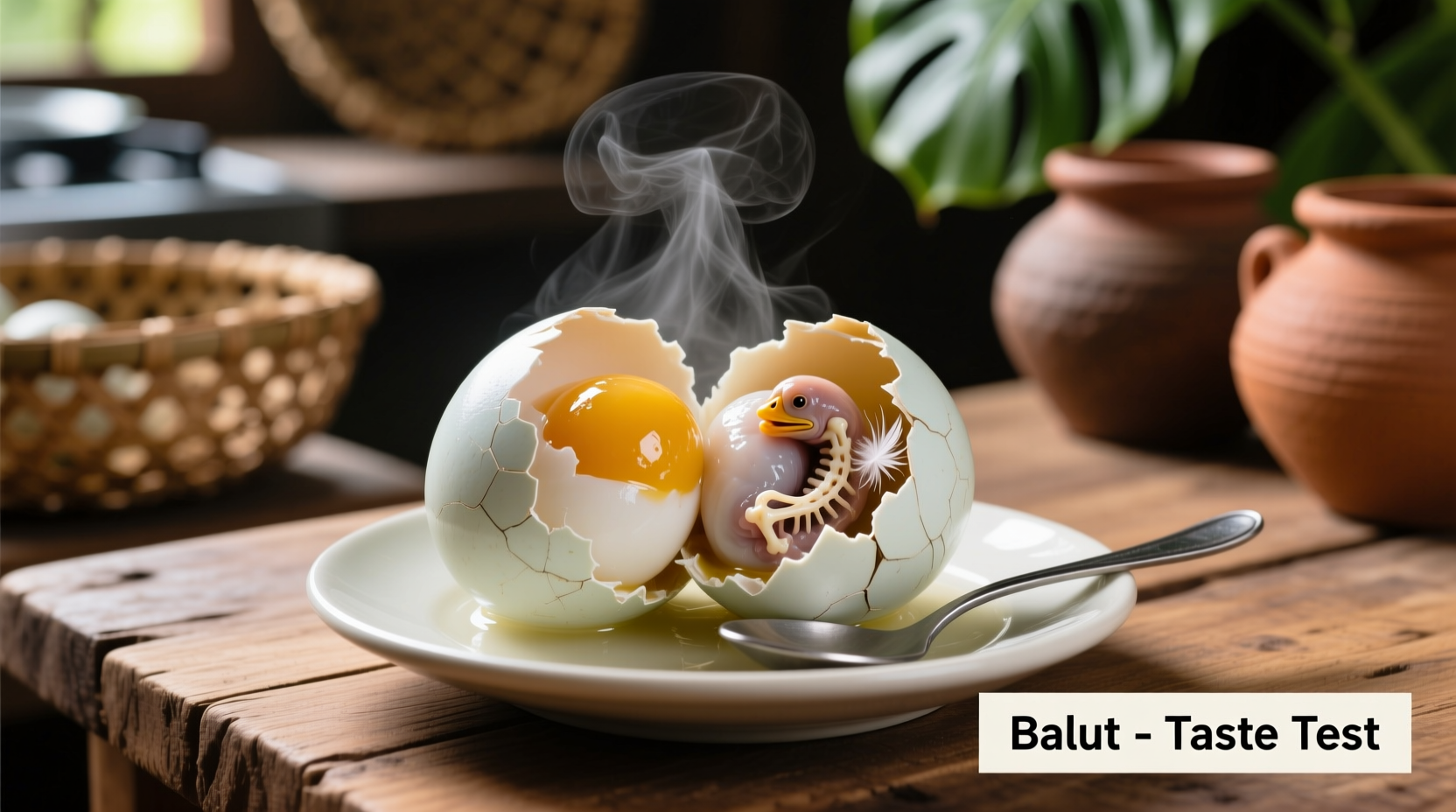Curious about what does balut taste like? This Filipino delicacy offers one of the most distinctive eating experiences you'll encounter. As a fertilized duck egg incubated for 16-18 days, balut delivers a complex sensory profile that combines familiar egg elements with unexpected textures and flavors that have captivated Southeast Asian palates for centuries.
Understanding Balut: More Than Just a Strange Snack
Balut isn't just "weird food"—it's a culturally significant street food deeply embedded in Filipino culinary tradition. Served hot in its shell with nothing more than a pinch of salt, this protein-rich snack provides approximately 188 calories and 14 grams of protein per serving according to nutritional analyses from the Department of Science and Technology Philippines.

The Complete Sensory Experience of Balut
When you crack open a freshly prepared balut, you're greeted with multiple sensory elements that work together to create its distinctive character:
Taste Profile Breakdown
The flavor journey begins with the savory broth inside the shell—reminiscent of rich chicken stock but with distinctive duck undertones. As you consume the various components, you'll notice:
| Component | Flavor Characteristics | Texture Description |
|---|---|---|
| Broth | Savory, slightly salty, umami-rich | Warm liquid, similar to consommé |
| Egg white | Mild, slightly rubbery | Firm yet tender, jelly-like |
| Yolk | Creamy, rich, slightly gamey | Smooth, custard-like |
| Embryo tissue | Distinct duck flavor, subtle mineral notes | Variates from tender to slightly chewy |
Texture Complexity
One of balut's most distinctive features is its textural variety. Unlike any standard egg dish, balut offers multiple textures in a single serving. The contrast between the smooth yolk, firm but tender white, and the varying textures of the developing duck parts creates a dynamic eating experience that keeps your palate engaged throughout.
How Preparation Affects Balut's Flavor
The incubation period significantly impacts what balut tastes like. Filipino street vendors typically offer three variations:
- 14-day balut: More liquid, less developed embryo, milder flavor
- 16-day balut: Balanced texture and flavor (most common)
- 18-day balut: More solid, pronounced duck flavor, chewier texture
Cooking method also matters—properly boiled balut served immediately delivers the optimal flavor experience. According to culinary researchers at the University of the Philippines, the ideal serving temperature is between 65-75°C (149-167°F) to preserve the delicate balance of textures.
Cultural Context: Why Filipinos Love Balut
To understand how does balut taste different from regular eggs, you need to appreciate its cultural significance. Balut has been part of Filipino street food culture since Spanish colonial times, with historical records dating back to the 18th century. It's commonly enjoyed as a late-night snack, often paired with beer, and considered an affordable protein source.
Balut Cultural Timeline
- 1700s: First documented references in Spanish colonial records
- 1900s: Becomes established street food throughout the Philippines
- 1970s: Gains international attention as "exotic" Filipino food
- 2014: Featured on Anthony Bourdain's Parts Unknown, boosting global awareness
- Present: Recognized as cultural heritage by the National Commission for Culture and the Arts
First-Timer's Guide to Trying Balut
If you're wondering what to expect when eating balut for the first time, follow these practical tips:
- Start with 16-day balut for the most balanced flavor and texture
- Consume immediately after preparation while still warm
- Season simply with just salt—no need for vinegar or chili unless you prefer
- Drink the broth first to appreciate its clean, savory flavor
- Work from white to yolk to embryo for the optimal flavor progression
Common Reactions to Balut's Unique Flavor
First-time tasters often experience a progression of reactions. According to a 2022 survey conducted by the National Commission for Culture and the Arts, initial reactions typically follow this pattern:
- Curiosity (98% of first-timers)
- Mild surprise at the broth (85%)
- Appreciation for the yolk (76%)
- Either acceptance or hesitation regarding the embryo (62% accept, 38% hesitate)
- Overall positive experience after finishing (71%)
"The initial hesitation usually disappears once people taste how flavorful the broth is," explains Dr. Maria Santos, food anthropologist at the University of the Philippines. "The rich umami quality is surprisingly familiar, which helps bridge the cultural gap for first-time tasters."
Where to Find Authentic Balut
For the most authentic balut taste experience, seek out these locations:
- Filipino street vendors in the Philippines (particularly Quezon City)
- Established Filipino markets in major US cities (San Francisco, Los Angeles, New York)
- Specialty Asian grocery stores with proper refrigeration
Avoid pre-packaged or refrigerated versions if possible—freshly prepared balut offers dramatically superior flavor and texture. The best vendors prepare it to order, ensuring optimal temperature and freshness.
Final Thoughts on Balut's Distinctive Flavor
Understanding what does balut taste like requires experiencing its complex interplay of flavors and textures. More than just a novelty food, balut represents centuries of Filipino culinary tradition—a complete protein source that delivers rich umami notes, creamy textures, and cultural significance in a single serving. Approach it with an open mind, appreciate its historical context, and you might discover why this unique delicacy has sustained its popularity for generations.
Frequently Asked Questions About Balut Taste
Is balut supposed to taste fishy?
No, properly prepared balut should not taste fishy. It has savory, umami-rich notes with subtle duck flavor. Any fishy taste indicates improper preparation or storage.
Does balut taste like regular duck?
It shares some duck flavor characteristics but is milder and more delicate. The developing embryo hasn't developed the stronger flavor of mature duck meat.
Why does balut broth taste so savory?
The broth contains natural glutamates from the developing embryo, creating a rich umami flavor similar to high-quality chicken or duck stock.
Does the age of balut affect its taste significantly?
Yes, 14-day balut has milder flavor with more liquid, while 18-day offers stronger duck flavor with more solid texture. Most prefer 16-day for balanced taste.
What's the best way to season balut?
Most Filipinos enjoy it with just salt. Some add vinegar or chili, but purists believe simple seasoning best showcases balut's natural flavor profile.











 浙公网安备
33010002000092号
浙公网安备
33010002000092号 浙B2-20120091-4
浙B2-20120091-4